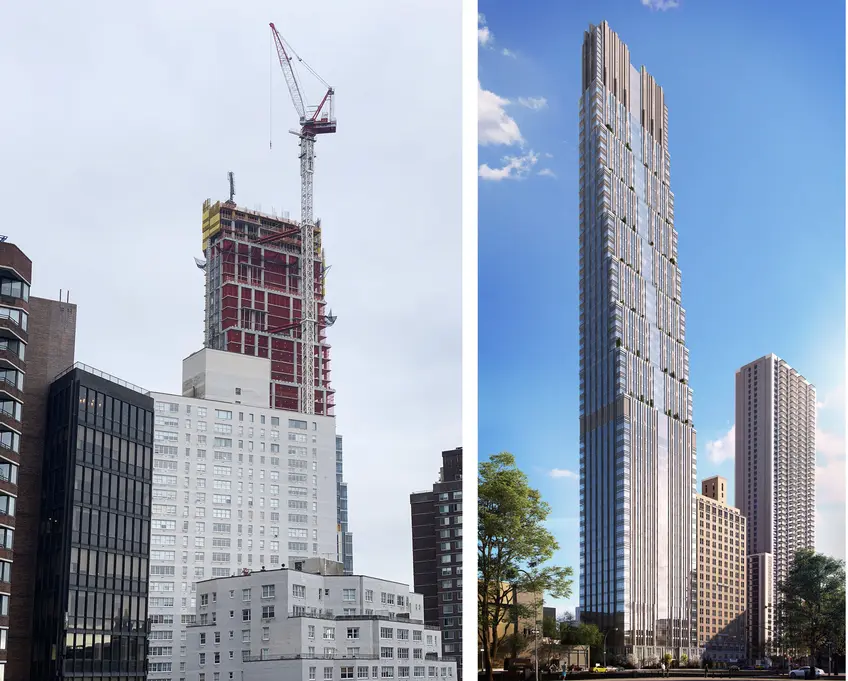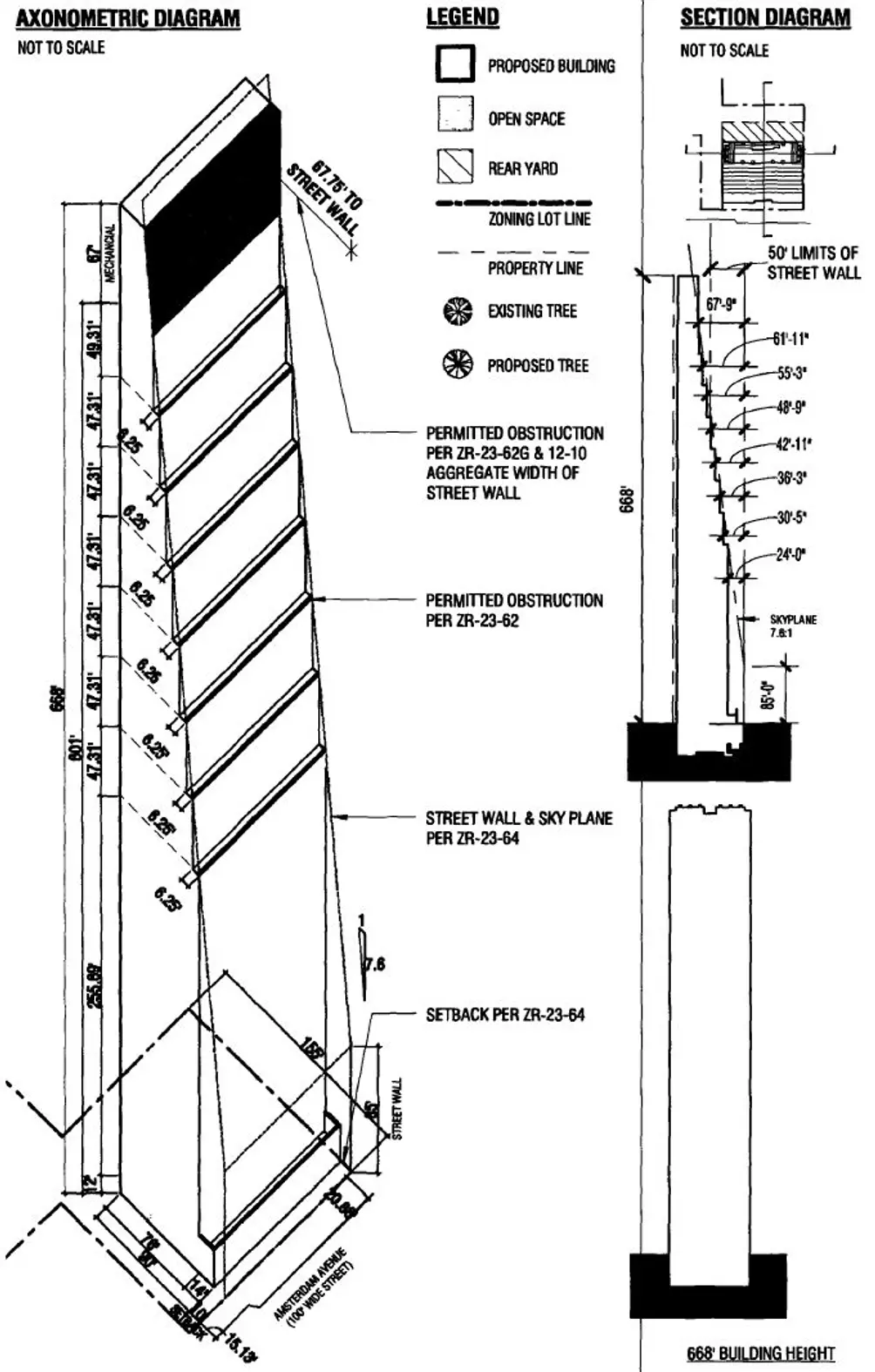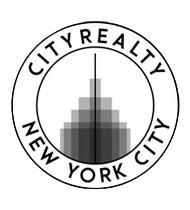 200 Amsterdam Avenue. Photo credit: CityRealty. Rendering credit: SJP Properties/Elkus Manfredi
200 Amsterdam Avenue. Photo credit: CityRealty. Rendering credit: SJP Properties/Elkus Manfredi
The tower’s setback form conforms to the sky exposure plane, a theoretical line that dictates how far a building must recede from the street once it reaches a certain height. The zoning lot, which grants air rights and allows the structure to rise higher, was assembled from an interconnected parcel that utilizes space in sprawling parking lots at the adjacent Lincoln Towers, a post-war “towers-in-the-park” complex where six massive, 30-story slabs hold close to 4,000 apartments.
The purchase of air rights and assembly of zoning lots that stretches past the building site itself is a common city practice which, in many cases, has allowed owners of historic buildings to cash in on their development rights without sacrificing the existing structure. However, in this case, the aesthetics of the lot shape have offended certain groups that believe it is "gerrymandered."
 200 Amsaterdam Avenue. Credit: NYC Department of Buildings
200 Amsaterdam Avenue. Credit: NYC Department of Buildings
In this article:
The BSA again reiterated that the lot conformed to legal standards and upheld its approval. According to Curbed, SJP Properties supported the decision in an official statement, which asserts that the zoning for 200 Amsterdam has been “consistently interpreted for more than 40 years,” and refers to three other buildings on the block that were built under the same regulations. The statement goes on to claim that the “opposition campaign blatantly ignores the laws that govern real estate development in New York City, and wastes resources that would be better spent on helping those who really need it.”
In a tweet, Borough President Gale Brewer called the decision “astounding” and expressed her “extreme disappointment.”
In the meantime, the skyscraper has continued its ascent, undeterred by attempts to file temporary restraining orders, the latest of which comes from the July filing of an Article 78 challenge, which is proceeding is used to appeal New York State or local agency decisions.
 200 Amsterdam Avenue. Credit: CityRealty
200 Amsterdam Avenue. Credit: CityRealty



 6sqft delivers the latest on real estate, architecture, and design, straight from New York City.
6sqft delivers the latest on real estate, architecture, and design, straight from New York City.
